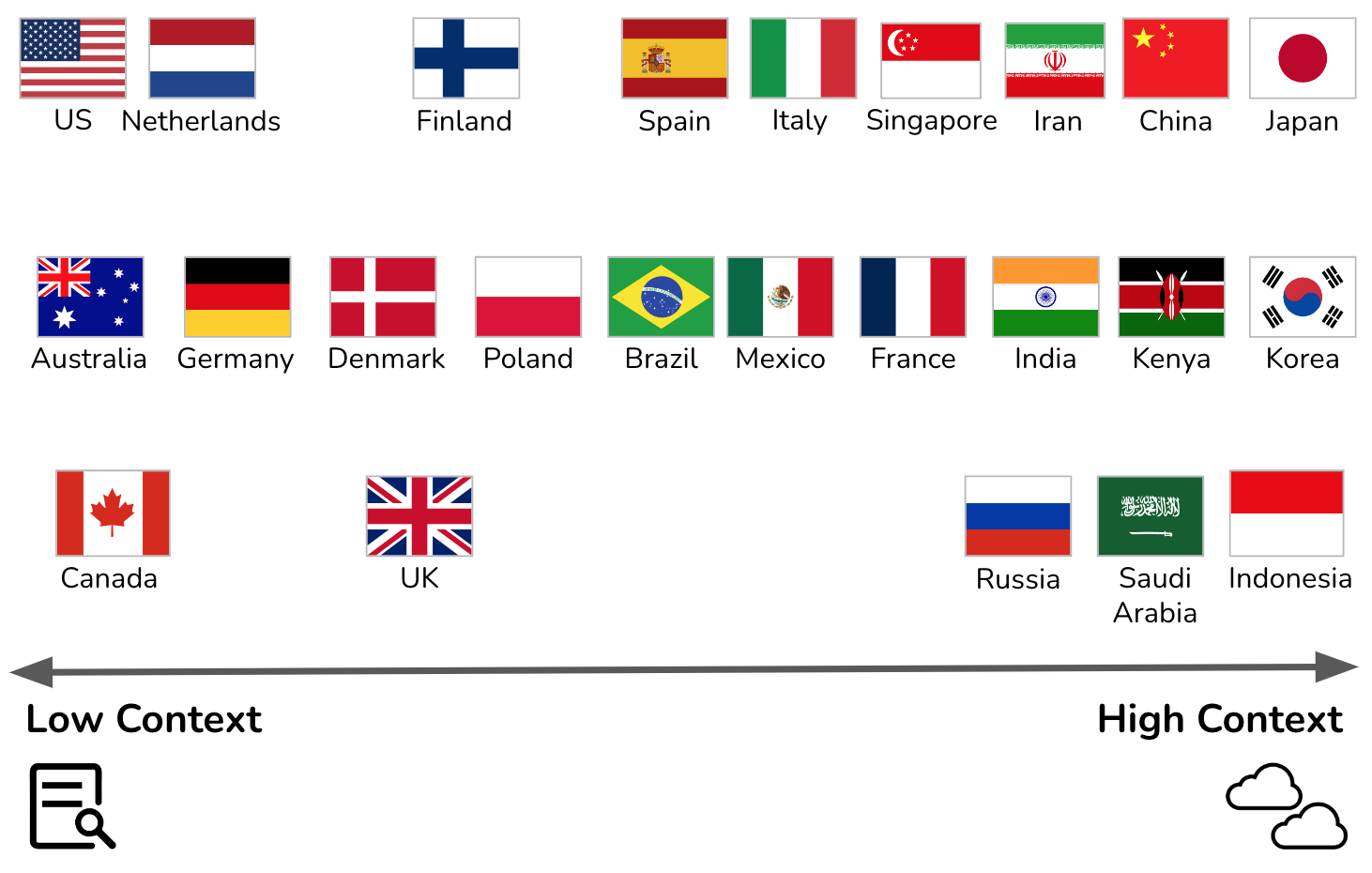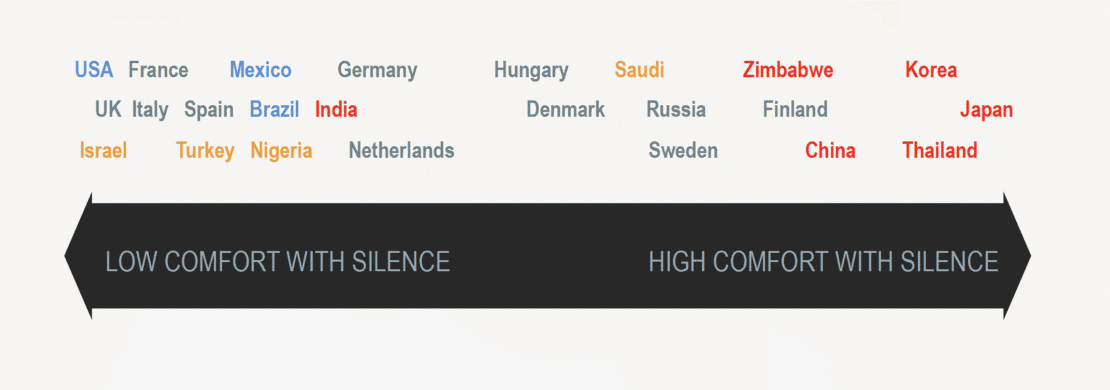Cultural Dimensions
COMMUNICATING
How Different Cultures Communicate

In a low-context society, communication is meant to be clear, to the point, and transparent. Low-context communicators say precisely what they mean. Words carry meaning and the speaker assumes others have a low shared understanding of the context of the conversation. That means the speaker is obligated to explain very explicitly and clearly what they mean. Low-context communication is often identified as a direct communication style. Meaning lies predominantly in what is said, and written and spoken communication often have the same value in carrying meaning.
In a high-context society, speakers and listeners assume that there is a great deal of shared context and mutual, unspoken understanding. Communication is layered, nuanced, and implicit. The speaker doesn’t have to say exactly what they mean because gestures, tone of voice, facial expressions, and even status and environment add meaning to the message. This means that high-context communication is often identified as an indirect communication style. Meaning lies in what is said, how it is said, who is saying it, and even by what is left unsaid. In other words: silence has meaning.
Edward T. Hall compared low-context communicators to newlyweds: they have no shared history therefore everything needs to be explained explicitly. They’re the couple in the restaurant that talks all the time. High-context communicators, on the other hand, are more like a couple that has been married for decades: there are years of shared history and therefore not everything needs to be spelled out. This is the couple that talks less and understands each other perfectly from a look, a gesture, or a few words that might not mean much to outsiders.
Key Characteristics
| LOW CONTEXT | HIGH CONTEXT |
|
In low-context cultures, good communication is :
|
|

COUNTRY COMPARISON
The chart shows examples of where certain countries fall on the communication scale.
In the following video, Erin Meyer provides several concrete examples of how collaborations among high and low-context communicators can sometimes lead to misunderstandings.
In the second video, Erin Meyer provides another concrete example of how body language, especially eye contact is interpreted differently across cultures
HISTORICAL ROOTS OF THIS DIMENSION
The more homogeneous a country is (Japan, for instance), the higher the shared context and the more indirect the communication style.
Heterogeneous countries like the US have little shared context. Americans have different backgrounds and share less history compared with citizens in a more homogeneous country, which is one reason why Americans’ communication style tends to be more direct.


THE LINK BETWEEN THE COMMUNICATION DIMENSION & LANGUAGE
Languages with a rich vocabulary (such as English with more than 500’000 words, or German) tend to me more low-context. Languages with poorer vocabulary (such as French, with approximately 70’000 words) are more high context.

THE ROLE OF SILENCE
Some people are more confortable with silence than others. The chart shows examples of where certain countries fall on this scale. A longer period of silence during a conversation might be misinterpreted.
Get in Touch With Us

